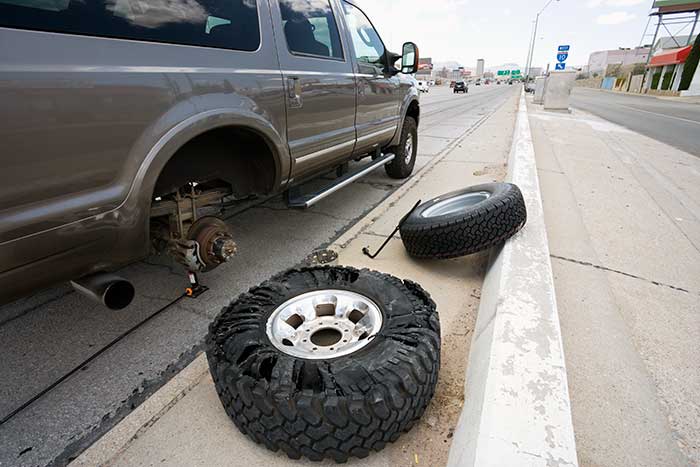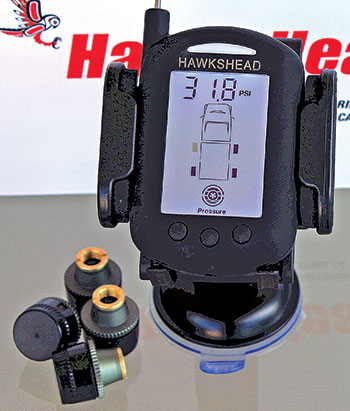Advertisement
You may be the last to know you have a flat. Then it's way too late. Here's a way to keep track of your tires on the go.

Tire pressure monitors aren't just for trailer tires! While most new vehicles are required to have tire pressure monitoring built in, you can retro fit systems to work on both your tow vehicle and the trailer.
I've towed trailers more than 60,000 miles. I've had blowouts and flats on the trailer go unnoticed until a passing motorist waved at me frantically. One guy blew his horn, waved, and pointed; I thought to myself, "Yes, thanks, it IS a nice boat, isn't it?" On a trip to Alaska from South Carolina along the Alaska Highway, I said to my wife, "That's a new noise." There was no other indication that the travel-trailer tire was flat and shredding itself.
If not caught soon enough, these shredding tires can easily take out a fender and damage the trailer or cargo, not to mention overloading the other tires, which can cause them to fail. The solution is to install a Tire-Pressure Monitoring System (TPMS).
Most new cars come with a TPMS. There are several varieties of aftermarket TPMS systems, most of which require demounting the tire and installing the sender inside the rim. It's not uncommon for these systems to require new senders when the battery powering it expires. Some work only when the vehicle is moving. Some have a range limited only to passenger-car tire pressures. My trailer tires called for 120 psi, which is out of the range of many systems.

In my research, I came across HawksHead. One of their products will monitor up to 140 psi and screw right on the valve stem, and they have replaceable batteries. The sender just screws on the valve stem, but the receiver needs to be programmed to know which wheels have the senders and what psi and temp are associated with each. The receiver can manage up to 22 wheels. It will sound an alarm if there's a blowout, slow leak, or high temperature. The receiver is battery powered and it uses the auxiliary 12-volt plug, so you can take it with you as you walk around the rig, toggling through the pressure and temp of each tire. With the receiver in hand, if you unscrew the sender from the valve stem (resulting in zero pressure), it will alarm with a blinking position — a great way to know the system is set up correctly and working. It retails for about $239.
